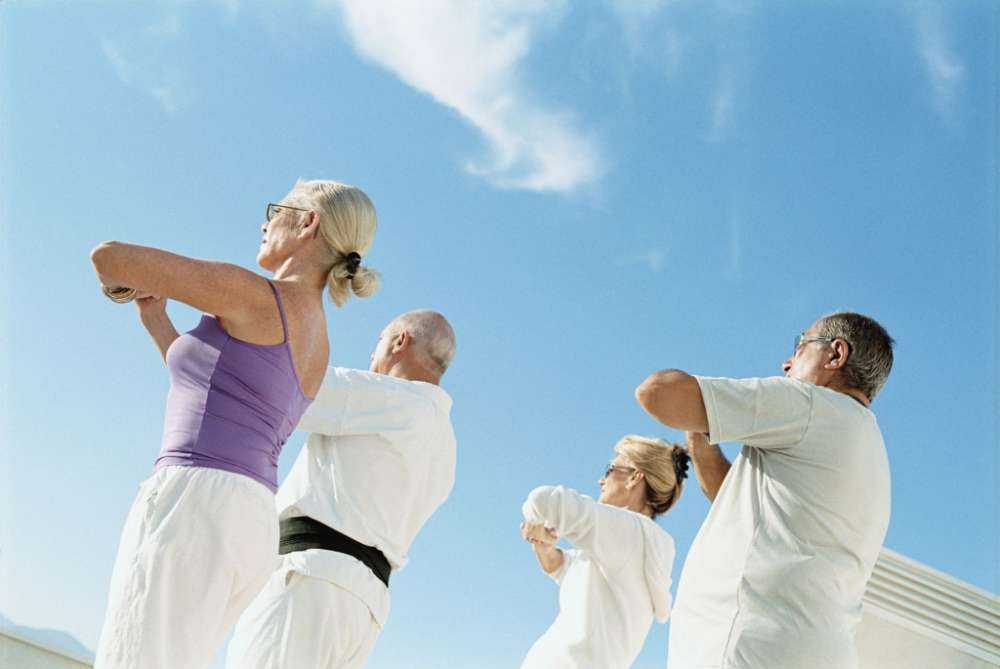By Geeta Maraj
August 14th, 2013 Edition
As we age our muscles tend to become weaker. This is especially the case when we are lacking a regular exercise routine. Research continues to show that through exercise we are able to keep our mind and our muscles healthy.
In particular, strengthening exercises which help to prevent respiratory issues as we age, involve exercises of the muscles under the tongue. We are rarely aware that there are exercises which can help to strengthen the tongue and swallowing ability. Equally, we vaguely understand how the strength of the muscles under the tongue, prevents saliva or particles of food from entering our lungs. Since our lungs have no way of processing unwanted particles, it becomes ground for lung infections over time.
Pneumonia is a respiratory infection caused by a variety of bacteria, viruses or fungal contagions which settle in the air sacs of the lungs. These germs slowly overcome the body’s natural immunity and are the leading causes of death in the elderly. Symptoms of pneumonia include, cough, yellow or green sputum, chest pain, feeling of weakness or malaise, shortness of breath, chills and fever.
When we strengthen the muscles under the tongue, our swallowing capacity remains strong and corrected. Issues with swallowing arise as we age, or have suffered from an illness, especially a stroke. What we are rarely educated about is that unless we keep our muscles under the tongue toned, we develop additional health issues such as, pneumonia and asthma. Yoga has a series of exercises which aims at strengthening the facial and tongue muscles. These exercises are an absolute must for those who have suffered a stroke, or for seniors hoping to prevent future health issues.
Here are a few exercises which can help to prevent this issue:
Breath exercise to strengthen and cleanse the lungs: Perform kapalabhati (rapid breath) exercises daily. This is done by first keeping the spine in an upright position. Keep the body as rigid as you can as you want the power of your lungs to move your body during this breathing exercise. Inhale a regular breath and then exhale till your abdominal muscles contract tightly, pushing all the air out of your lungs. Then inhale to a three-quarter capacity filled lung, and exhale that breath with an outburst through the nostrils. This type of breathing is similar to a loud sniff, as when blowing your nose. When you understand the contraction of your abdominal muscles on the out-breath, you can then increase this exhale up to 5 times per breath. Once you exhale forcefully, air automatically re-enters the lungs, so there is no need to physically inhale after each outburst of your breath during the exhale. This type of breathing helps to not only strengthen the lungs but cleanses any impurities stored in the lungs.
Exercises to strengthen the muscles of the tongue: Roll your tongue around the circumference of your teeth starting from the back left upper molar, pushing your tongue between the gum line and the cheek, till your tongue moves to the back right upper molar, then push your tongue to the bottom right molars and move your tongue all the way around to the left bottom molars. After you have completed this rotation, repeat this motion in the reverse direction. This action is equivalent to making large clockwise and anticlockwise circles with your tongue between the gum-line and inner cheek. Repeat up to 3 to 5 times in each direction as you develop more strength in your tongue muscles.
A second exercise would be circular tongue stretches: push your right cheek as far away from your teeth as you can with your tongue. Then try to make clockwise and anticlockwise circles on the inside of your cheek while pushing your cheek away with your tongue. Begin by drawing one or two circles with your tongue and build up to a longer series as your muscles get stronger. You’ll find when you do this exercise that the bottom of your tongue will become very tender and achy. Do not be alarmed by this, as it is an indication that your muscles are strengthening.
Tongue pushes: push your tongue up between your front teeth and gum line under your nose. Hold for a few seconds, pulling your top lip in as you try at the same time to push your top lip away with your tongue. Hold for 5 seconds or longer. Then repeat onto the bottom lip by pushing your tongue between the inside of the bottom lip and the gum line. At the same time as you are trying to push out the bottom lip with your tongue, pull in the bottom lip to create a resistance stretch for your tongue. You can increase the length of hold as your tongue muscles become stronger.
Practicing such exercises will help to strengthen your tongue thereby preventing excessive coughing or choking as you swallow your saliva or food. While these exercises might be simple for some, it might be very difficult for others. The only reassurance is to endure and trust that in time these exercises will become easier.


Lourenco Mascarenhas
March 10, 2020 at 4:42 pm
Simply Amazing